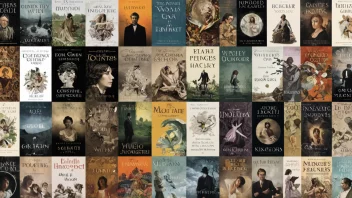Epistolary novels, those crafted through letters, diary entries, or other forms of correspondence, have carved a distinct niche in the world of classic literature. This unique format allows authors to convey intimate thoughts and emotions, providing readers with a direct glimpse into the characters' minds. The significance of these novels extends beyond their narrative style; they serve as powerful tools for exploring themes of love, loss, and social commentary.
One of the most renowned examples of an epistolary novel is Dracula by Bram Stoker. The story unfolds through letters, newspaper clippings, and diary entries, creating a sense of immediacy and personal connection. This format not only heightens the suspense but also allows for multiple perspectives, enriching the reader's understanding of the characters’ motivations and fears. The novel's structure mirrors its themes of isolation and the clash between modernity and tradition, making it a compelling read that resonates with audiences even today.
Another significant work in this genre is The Color Purple by Alice Walker. Through the letters of Celie, the protagonist, readers are privy to her struggles, growth, and ultimate empowerment. The epistolary format allows for profound emotional depth and authenticity, as Celie's voice emerges as a powerful testament to resilience against adversity. Walker's use of this style not only provides insight into the personal journey of an African American woman in the early 20th century but also highlights broader societal issues, including racism and sexism.
Epistolary novels often challenge traditional storytelling techniques, enabling authors to delve into the complexities of human relationships. They can convey a sense of urgency and intimacy that traditional narratives may struggle to achieve. This format allows characters to express their innermost thoughts and feelings, making it easier for readers to empathize with their experiences. Furthermore, the fragmented structure of these novels can mirror the chaos and unpredictability of life, enhancing their impact.
In addition to their emotional resonance, epistolary novels also serve as a reflection of the historical context in which they were written. For example, Frankenstein by Mary Shelley utilizes letters to explore themes of creation, responsibility, and the consequences of scientific advancement during the Enlightenment period. The use of letters in such novels can provide insight into the societal norms and values of the time, offering readers a richer understanding of the historical backdrop.
In conclusion, epistolary novels hold a significant place in classic literature for their ability to provide intimate and multifaceted perspectives on human experience. From the suspenseful tales of horror to the profound journeys of self-discovery, these novels engage readers in unique ways, inviting them to connect deeply with the characters and their stories. As literature continues to evolve, the enduring appeal of the epistolary format serves as a testament to its power in conveying the complexities of life.






